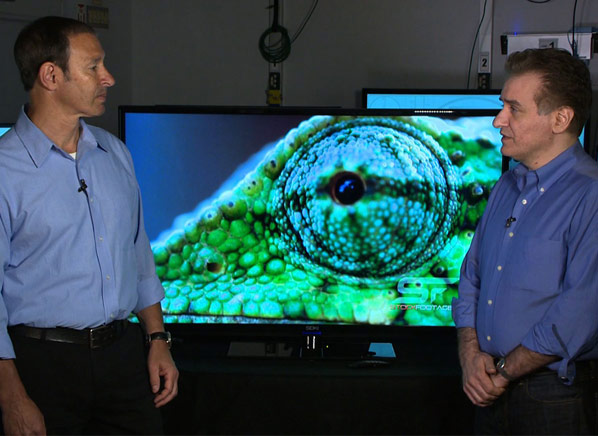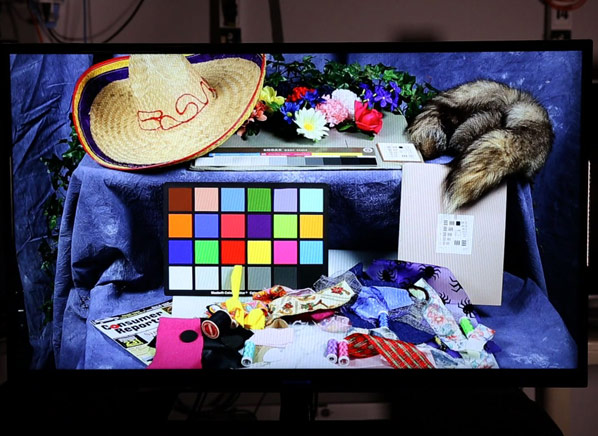The first Ultra HD TVs we saw cost $18,000 to $40,000, so it was hard not to notice when a lesser-known company called Seiki blew the doors off Ultra HD TV pricing when it recently started selling a 50-inch set (model SE50UY04) for just under $1,500.
Admittedly, the screen size is significantly smaller than the 84- and 85-inch screens we saw on early 4K sets from LG, Samsung, and Sony, but the Seiki's price is also well below the announced $5,000 price tag for Sony's upcoming 55-inch 4K XBR-55X900A set.
We were able to purchase the 50-inch Seiki, and we've just completed our initial testing of the TV to see if it offers a compelling option for prospective buyers. Unfortunately, the Seiki turned out to be a mediocre to below-average LCD TV, albeit one with a higher-resolution screen.
Things we liked. That said, beyond its low price, there were several things we liked about the Seiki. One was that with native Ultra HD content—played via a PC with a 4K video card—the Seiki's 3840x2160 screen delivered on the primary benefit of Ultra HD, enhanced picture detail. The images we saw looked sharp and detailed, with image smoothness and depth. And there was no visible pixel structure, even when we moved close to the TV.
We also noticed that black levels were very good, especially for an LCD set, but only when playing regular high-def content, such as TV shows and movies from cable or a Blu-ray player. This was due to a local-dimming feature that was only operational when we played regular HD content; it was absent when the TV was playing Ultra HD programs, so blacks were visibly lighter. Some local dimming side effects were visible on our "white text against a black background" test patterns, but they were not a distraction on normal video.
While we have questioned whether or not Ultra HD makes sense in smaller screen sizes, the extra resolution will allow many people to either get closer to the TV—such as when it's being used for video games or as a computer monitor—or to get a larger screen without changing their seating distance.
Things we didn't. To hit that low price, the TV is stripped of features—so there's no Wi-Fi, Internet, or 3D. The set does have a 120Hz refresh rate, but we didn't see much improvement on our motion-blur tests, so this TV performed much like a regular 60Hz model. And unlike with the larger LG, Samsung, and Sony TVs, the company didn't invest in a more robust sound system. The TV also lacks a backlight control, which can be used to adjust brightness to compensate for ambient light conditions,
More problematic for us were the TV's basic picture controls, which made it difficult for us to accurately calibrate the set. (The TV does come with service-menu picture controls that can be unlocked by a professional calibrator, but it seems unlikely that many owners will spend $300 or $400 for this service on a $1,400 TV.) As a result, the TV had below-average color accuracy, in part because the tint adjustment was grayed out and inaccessible.

Senior editor Jim Willcox and head TV engineer Claudio Ciacci discuss the Seiki's Ultra HD picture quality.
Even more annoying, the Seiki takes a heavy-handed approach to image processing. Although we turned off the noise-reduction setting, the feature still appeared to be active, along with added edge enhancement. While this processing did a good job of preserving fine detail, it gave people and objects an unnatural look that detracted from the overall picture fidelity. It was the most obvious on upconverted high-definition content, where faces and the surfaces of objects looked pasty and cartoonish. It was less obvious on the supplied Ultra HD programming.
When playing upconverted 1080i movies on the TV, we also noticed a shimmering effect on fine detail in motion scenes, something we didn't see when playing back 1080p content. When we performed the upconverting using an Oppo BDP-103 Blu-ray player instead of the TV's built-in upscaling, we felt the overall picture quality improved.
The supplied Ultra HD content was something of a mixed bag. While some clips offered a glimpse of the detail promised by Ultra HD TV, others looked only marginally better—and sometimes worse—than regular HD fare, with compression artifacts such as blocky noise and false contours on shadowy scenes. Because we still don't have our own native Ultra HD content, we couldn't be sure whether it was the TV or the provided content that was causing these issues.
In addition, we noticed several shortcomings consistent with many LCD TVs, such as motion blur on faster-moving scenes, and a moderately narrow viewing angle, about average for an LCD set. Some backlight non-uniformity was also present on this Seiki, but with the active local dimming feature this was not so apparent.

The Seiki was able to display Ultra HD photos stored on a USB flash drive.
One additional thing we did like: When we first checked out this set during a press conference, we were told by the company that the USB port didn't support Ultra HD photos. But we were pleased to discover that unlike the LG Ultra HD TV we tested, the Seiki was able to show what were essentially 8-megapixel photos from a USB flash drive. Again, images were detailed beyond 1080p, but they too were marred by image processing that made surface textures look pasty and smudged.
Bottom line. While we applaud Seiki for offering an Ultra HD TV at a more reasonable price, the reality is that apart from the higher-resolution screen, the Seiki is really just an average to below-average LCD TV, and one without many features. We're also still not convinced that the higher resolution really makes much sense in this screen size, unless you expect to be sitting unusually close to the TV. (We'll also be purchasing Sony's 55-inch Ultra HD TV when it becomes available, so we'll weigh in on another relatively smaller-sized Ultra HD set.)
For those who believe they need an Ultra HD TV and have a budgetary limit of $1,500, the Seiki is currently the only game in town. However, when you consider that there is really no commercially available Ultra HD content, we believe most people would be better served by buying a regular 1080p set that delivers excellent HD picture quality, as high-definition programs look better on these sets than they do on the Seiki. When the Seiki is added to our TV Ratings, we expect it to be among the lower-rated models in its screen size. But if you decide to buy (or bought) the Seiki E50UY04, let us know what your experience is, and how satisfied you are with your purchase.





